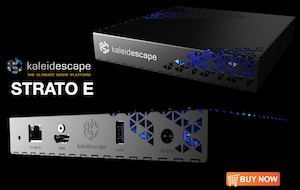jjazdk
Member
- Joined
- Aug 17, 2018
- Posts
- 98
It was a bug fix. that enabled hulkss to high pass two subs that ran in parallel with three others.
Btw, jjazdk, did you read my examination of hulkss three subwoofer configurations above? And if so what do you think of my conclusion?
I did, yes.
It is fairly obvious, to me, why the 5 driver subwoofer setup is much more wellbehaved above 100Hz, and therefore also a superior impulse response. Wether that is relevant for a subwoofer, maybe, maybe not. It sure is impressive!
I do however think the MSO solution will often be better, in terms of "power management", i.e. not putting excessive strain on some of the subwoofers but a more equal load on all of them (of course depending how you set up the correction-ranges in MSO).
MSO gives me a really nice control of the individual subwoofers, where the current AL implementation will wrestle my subwoofers into order with no way for me to adjust that wrestling to a more sensible level (pr. subwoofer).
That is why I propose an individual level control of the subwoofers (to take into account each subwoofers output capability).
A correction option that does the following for a minimum phase system:
1. Measures and uses individual delay correction for each subwoofer
2. Lets the user account for output capability (level adjusting the individual subwoofers)
3. Makes one combined frequency correction, based on the summation of the delay-corrected subwoofers
4. Makes one level correction of the combined outputs.
A correction option that does the following for a linear phase system:
1. Measures and uses individual delay and phase (TTD) correction for each subwoofer
2. Lets the user account for output capability (level adjusting the individual subwoofers)
3. Makes one combined frequency correction, based on the summation of the delay and phase corrected subwoofers
4. Makes one level correction of the combined outputs.
I acknowledge that this is a spiral of never ending requests, for a myriad of different options, as our setups get more and more complicated.
An example on why I need the individual level control:
In my current setup my "front subwoofer" consist of 15x10" drivers, on one amplifier channel. Where as my "kitchen" subwoofer consists of 6x10" drivers, and is farther away from MLP. A measurement at MLP of the two subwoofers, driven by the same signal level from the amplifier, yields roughly 12dB more output in most of the frequency range from the front subwoofer than the kitchen subwoofer. When AL tries to correct this, the front subwoofer drivers ends up getting very little power compared to the drivers in the kitchen subwoofers. I also have a "rear subwoofer" with 7x10" drivers, when measured in MLP this has an output somewhere in between the front subwoofer and the kitchen subwoofer.
With my background (electro-acoustic engineer) it makes a lot of sense to have the ability to ensure equal load (within reason of course) for all of the drivers. In my own setup that would be easy, as I just want the same drive level for all my subwoofer drivers (28x10").


















